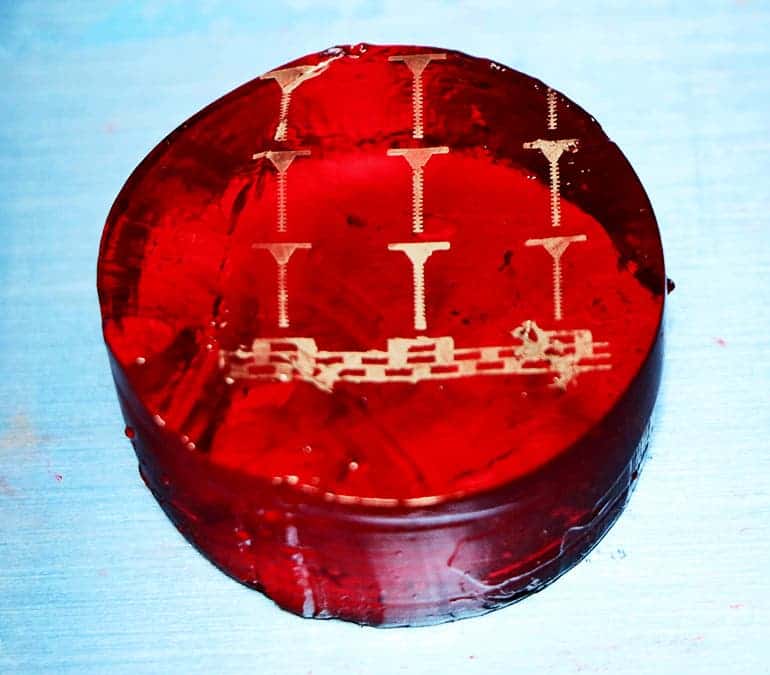Martin Thuo of Iowa State University and the Ames Laboratory can show you several remarkable photos in his collection: a curled sheet of paper with a LED display or a rose with metal traces printed on a petal. This isn’t an artistic project — Thuo is working on a new technology which allows printing conductive metallic lines on all kinds of materials, from a wall to a leaf.
This could be a game changer.

The technology features liquid metal (alloys of bismuth, indium, and tin) and is remarkable for multiple reasons. For starters, it’s capable of producing extremely small particles, about 10 millionths of a meter across. The resulting print is also not hot, which means you can print it on anything you want — including living things.
The printed metal acts like a quickly-solidifying weld, creating conductive, metallic lines and traces which can be used for electronic circuits.
“This work reports heat-free, ambient fabrication of metallic conductive interconnects and traces on all types of substrates,” Thuo and colleagues write in a recent study.
Through the ‘printing’ process, the metal inside flows and solidifies, creating a heat-free weld or, in this case, printing conductive, metallic lines and traces on all kinds of materials — everything from a concrete wall to a leaf.
The technology could have numerous applications. It could be used to print sensors to measure the growth and state of crops (assessing whether everything is going smoothly, or if they require more water or are being attacked by pests). Similarly, the sensors could be used to monitor the structural integrity of a building. The technology has also been tested in this regard. The researchers used a paper-based setting as a base for the sensor, and the sensor read changes in electrical currents when the paper was curved. Researchers say that, ultimately, the approach could also be used for medical sensors or models for biological tissues (since it can also be printed on soft surfaces such as gelatin). All this is done without damaging the base, even when it’s a living biological system.

Initially, this started as a teaching exercise. Thuo wanted to give his undergrad students something to work on that would be both useful and fun.
“I started this with undergraduate students,” he said. “I thought it would be fun to get students to make something like this. It’s a really beneficial teaching tool because you don’t need to solve 2 million equations to do sophisticated science.”
Now it’s grown spectacularly — the university has even sponsored Thuo’s lab with start-up funds to continue working on the technology.
“The students discovered ways of dealing with metal and that blossomed into a million ideas,” Thuo said. “And now we can’t stop.”
The study was published in the journal Advanced Functional Materials.



